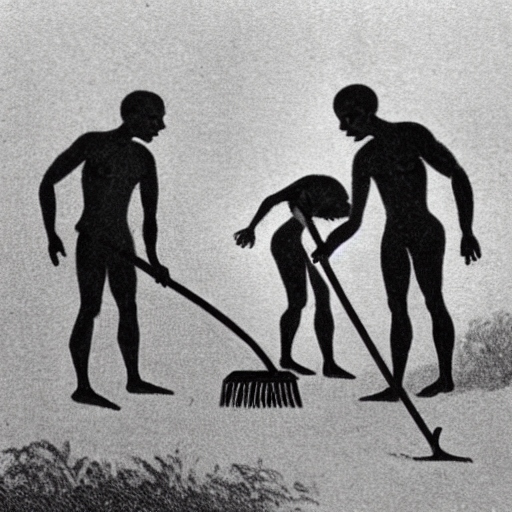From Sand and Clay to Robots: A Historical Journey Through Cleaning Techniques
Maintaining a clean environment has been a human imperative since the dawn of civilisation. While the tools and methods have evolved dramatically, the desire for a healthy and organised space has remained constant. Today, we embark on a historical journey to explore the fascinating evolution of cleaning techniques.
Ancient Civilisations: The Pioneers of Cleanliness
- Early humans: Even in prehistoric times, evidence suggests humans utilised tools like animal skins and leaves for basic cleaning.
- Mesopotamia (2800 BC): The Babylonians are credited with some of the earliest cleaning advancements, creating soap-like substances from fat and ash.
- Egypt (1500 BC): Egyptians used a variety of natural cleaning agents like vegetable oils and clays, alongside implements like scrapers and sponges.
- Greece (6th Century BC): The Greeks favored sand, clay, and pumice for scrubbing their bodies, followed by oil applications and scraping with a metal tool (strigil). Public baths also became a staple in Greek society.
- Rome (100 BC): Romans were renowned for their advanced sanitation systems and public bathhouses. They utilised a form of soap made from animal fat, ash, and water.
Medieval Times: A Shift in Focus
- The Dark Ages: With the decline of Roman society, public hygiene practices deteriorated in Europe. However, personal cleanliness remained important to the wealthy who used scented oils and baths.
The Renaissance Revival (14th-16th Centuries)
- A renewed emphasis on hygiene emerged during the Renaissance. Public bathhouses regained popularity, and soap production techniques improved.
The Industrial Revolution and Beyond (18th Century – Present)
- 18th Century: The invention of soap bars by Nicolas Leblanc in 1791 marked a significant milestone. Washing machines were also patented, albeit much simpler versions compared to today’s models.
- 19th Century: Vacuum cleaners emerged in the late 19th century, revolutionising floor cleaning.
- 20th Century: The 20th century saw a rapid progression in cleaning technologies. Disinfectants, bleach, and powerful cleaning chemicals became commonplace. Appliances like electric mops and dishwashers further transformed home cleaning.
- 21st Century: Innovation continues in the 21st century with the rise of robotic vacuum cleaners, smart cleaning devices, and eco-friendly cleaning solutions.
The Future of Cleaning: Technology Takes the Lead
As we look towards the future, technology promises to play an even greater role in cleaning. We can expect advancements in areas like:
- Autonomous cleaning robots: Robots capable of handling a wider range of cleaning tasks, from vacuuming and mopping to disinfecting surfaces.
- Self-cleaning surfaces: Materials that repel dirt and grime, requiring minimal cleaning efforts.
- Smart cleaning systems: Networked devices that learn cleaning patterns and optimise cleaning routines for maximum efficiency.
Conclusion:
The history of cleaning techniques reveals a continuous human endeavor to create healthier and more comfortable environments. From humble beginnings to the cutting-edge technologies of today, cleaning has transformed dramatically. As we move forward, one thing remains certain: the pursuit of a clean and healthy space will continue to drive innovation in the cleaning industry.


 We use cookies on our website to give you the most relevant experience by remembering your preferences and repeat visits. By clicking “Accept”, you consent to the use of ALL the cookies.
We use cookies on our website to give you the most relevant experience by remembering your preferences and repeat visits. By clicking “Accept”, you consent to the use of ALL the cookies.